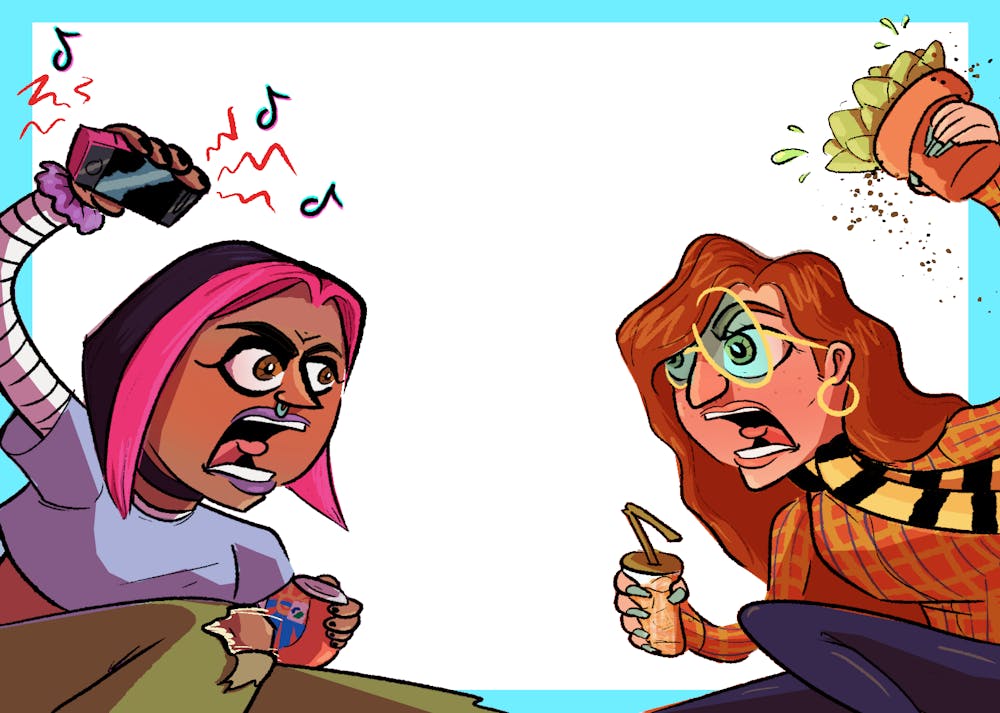With conflict between generations — baby boomers vs. Generation X, millennials vs. Generation Z — prevalent on the internet and in pop culture, it can seem like an inherent part of life. Family dynamics show us early that conflict between ages on a micro-scale, parents to children, for example, is unavoidable.
But inter-generational conflict, however, is relatively new and tied into marketing, said Kathleen Waldron, senior lecturer at the School of Social and Behavioral Sciences.
“Generational differences didn't happen at an extreme extent until the baby boomers,” she said. “When cultural centerpieces like rock 'n' roll and more targeted marketing came out, the generational divide could really happen. Prior to that, children consumed the same entertainment as their parents — things weren't oriented toward different ages.”
The origin of generational divides
For a society built on capitalism and consumerism, groups with characteristics are what push institutions forward, said Carol Mueller, professor at the School of Social and Behavioral Sciences. This phenomenon of generations becoming differentiated through marketing wasn’t by surprise, but rather by design following World War II.
“A lot of the credit for generational divides goes to the business world, and the baby boomers were an opportunity for a huge new market in the U.S. economy," Mueller said. “It’s a marketing tool to characterize a group of people by generations and to think that they will have different spending patterns and tastes from the people before them.”
The silent generation, having just came out of the Great Depression, was less optimistic about consumerism, making them less than desirable as new targets for marketing tactics, Mueller said. This led to a distinct line drawn between previous generations and baby boomers, marking the beginning of specialized age groups as society entered a post-war lifestyle.
“Business institutions are interested in getting people to buy particular products by any means possible,” Mueller said. “Accentuating a category that hosts a large number of individuals makes it easier to target more potential consumers. If society is able to innovate a way to generalize generations, it makes it easier for corporations to target these groups.”
If a group starts with shared experiences, it’s easier to unify them, Mueller said.
The modern trend of large businesses appearing personal in their online personas exemplifies this. Brands like Wendy’s and Netflix push aside the business professional look and opt for a casual, humorous approach to branding.
From tweeting memes to getting themselves involved in internet drama, they not only amuse followers, but target younger generations, and it often pays off.
The company is able to increase consumer levels, and younger generations are able to collectively find humor in online posts with their respective age groups.
With the world changing rapidly and corporations trying to hold onto power as we progress, the generational divides brought through marketing are not going away any time soon, Mueller said.
“All kinds of categories of people can be selected according to what society needs," she said. "Categories of people are a permanent feature of society — age is one of those. It can be used, and it certainly does represent differences."
Generational divides today: Gen Z vs. millennials
Today, college-age students bear witness to the divide increasingly publicized by social media — millennials and Gen Z — gaining online criticism from both sides on rifts over things like side parts and eating Tide Pods. Although much of this has been the foundation for TikTok and Twitter comedy, the generational divide extends beyond the surface level of online banter.
“I think there's a sense of resentment from younger generations toward older generations because they feel they’ve sucked the air out of the room,” Waldron said. “They look at society and assume that the problems in the world were from lack of effort from those before them.”




